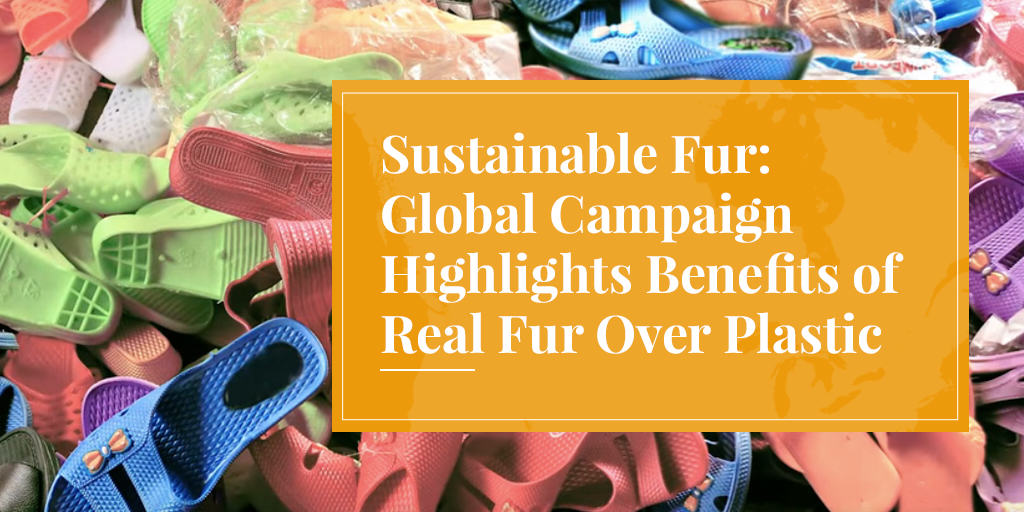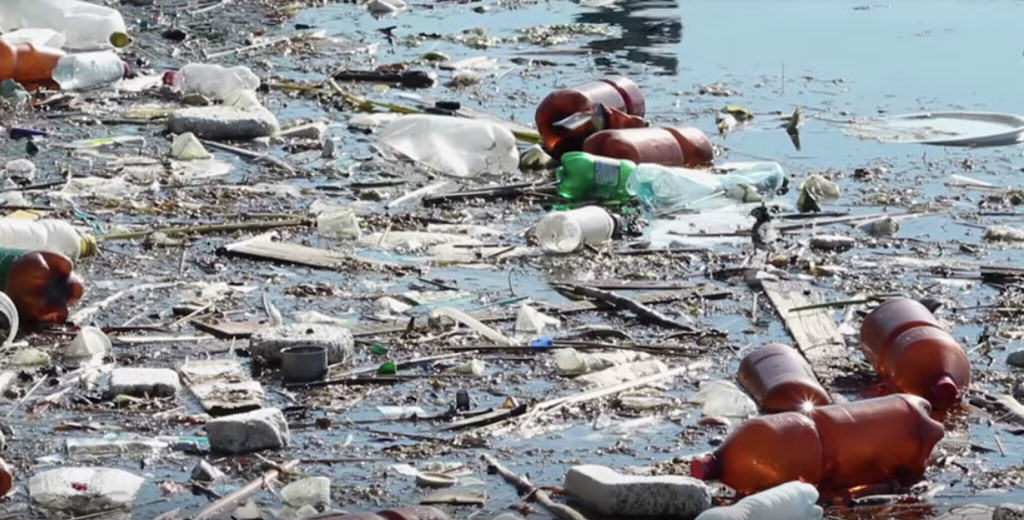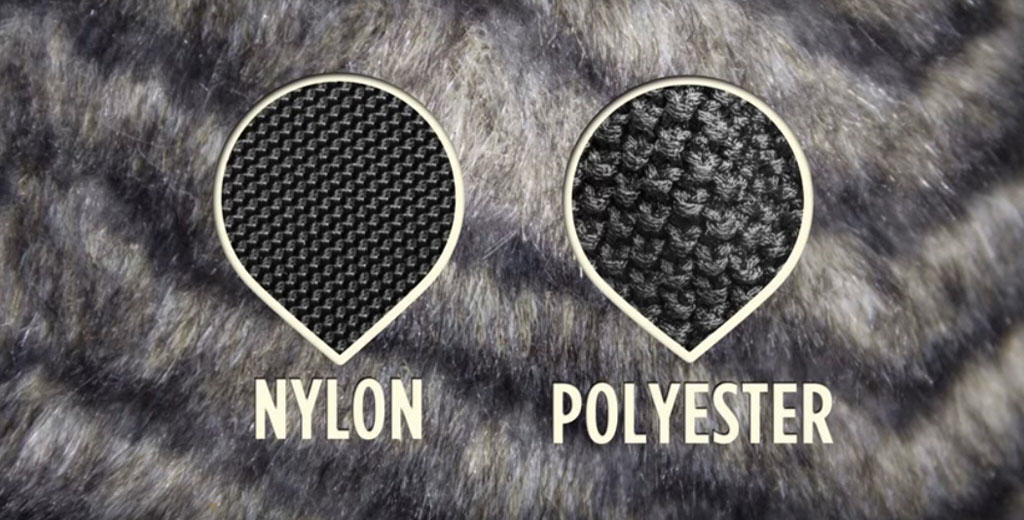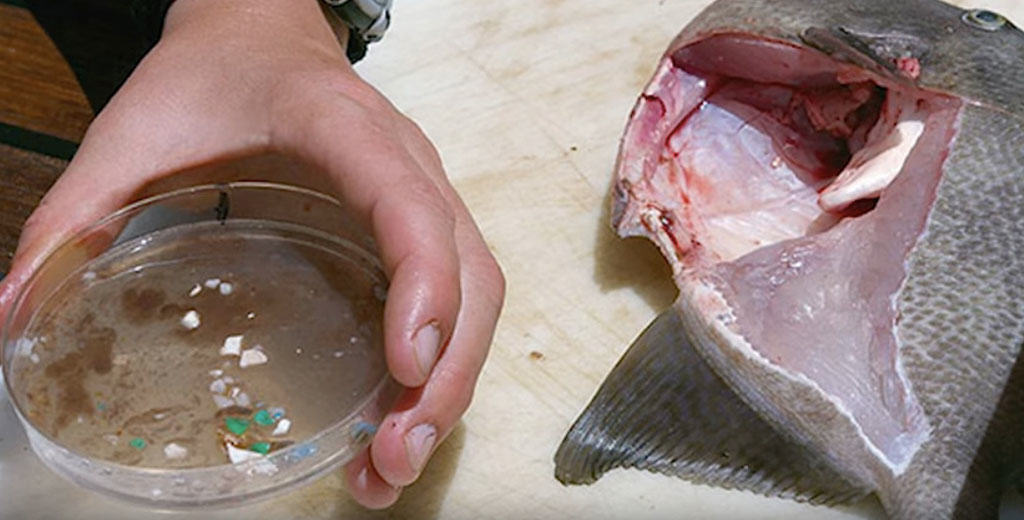
The fur industry is launching a global campaign to promote sustainable fur, and the environmental benefits of using real fur over petroleum-based synthetics, including fake fur.
A hard-hitting video produced by the International Fur Federation is being launched in key markets around the world. In the accompanying press release, Mark Oaten, CEO of the IFF said: “It’s time to call out the fake news about fake fur.” Fake fur is being promoted by animal activist groups as the ethical alternative to real fur.
Sustainable Fur, the campaign video, shows the environmental damage that is being caused by plastic-based fake fur and other synthetics. In North America, the video was prominently promoted on the website of Women’s Wear Daily for a week, before being distributed more widely. In addition to Canada and the US, the video is being promoted in China, Japan, Taiwan, Korea, Russia, Argentina, Brazil, and throughout Europe.

“Natural fur is the responsible choice when compared with fake fur or other synthetics,” said Mark Oaten.
“The consumer is being fed a constant diet of fake news by activists when it comes to fake fur,” he said. “Meanwhile, scientists are warning that plastics should be eliminated as much as possible from the retail chain.”
The video shows how fake furs and other synthetics are creating major environmental problems because they are made from fossil fuels (non-renewable resources) and are being linked to the release of microfibers into the environment.
“These are plastics that take decades to biodegrade – if they biodegrade at all – and we are now learning that they are entering the food chain and being consumed by marine life, and eventually by us,” said Oaten.
“Real fur is the sustainable alternative. It is natural and provides decades of use for the consumer.”

The video explains that farmed fur animals (primarily mink and fox) are fed left-overs from our own food supply – the parts of fish, pigs and chickens that humans don’t eat. The manure and other wastes from fur farming are composted to provide bio-fuels or natural fertilizers, completing the agricultural nutrient cycle. This is a much more sustainable and ethical alternative than dumping such wastes in landfills.
SEE ALSO: Fur farming: Nothing is wasted, at Truth About Fur
The production of wild fur is strictly regulated to ensure that only part of the naturally-produced surplus from abundant populations are used. This is an excellent example of the sustainable and responsible use of renewable natural resources, a key environmental conservation principle promoted by the International Union for Conservation of Nature (IUCN) and other conservation authorities.
Many furbearing species must be culled to protect property, livestock, natural habitat and endangered prey species, or even human health, whether or not we use fur. Overpopulated beavers can flood farmland, forests, roads or homes. Overpopulated raccoons and foxes can promote the spread of rabies or other dangerous diseases. Coyotes are the number-one predator of young calves and lambs on ranches. Coyotes, raccoons and foxes must be controlled to protect vulnerable populations of ground-nesting birds and the eggs of endangered sea turtles.
SEE ALSO: Reasons we trap, at Truth About Fur

The new video campaign is being released as the fashion industry and consumers are beginning to discuss more seriously the environmental impact of our clothing choices. The confusion caused by animal activist campaigns became apparent when Gucci CEO Marco Bizzarri recently announced that his company would stop using fur “because of their commitment to sustainability”. As Truth About Fur explained in “Fur-free Gucci policy contradicts company’s ‘sustainability’ claims”, the brand’s decision to turn away from fur reveals an astonishing misunderstanding of the real meaning of sustainability.
SEE ALSO: Sustainability: Why is Gucci so confused?
The first major campaign to promote the fur trade’s important sustainability credentials was launched by the pioneering website Furisgreen.com. This website has attracted considerable media attention, helping to spread the message. It is expected that the new IFF Sustainable Fur video will also generate media interest in response to press releases that were distributed simultaneously in North America, Europe and Asia.
Help to Share the Message
To help spread the message, retailers, manufacturers and people in every sector of the fur and fashion industries are being encouraged to post the new IFF Sustainable Fur video on their websites and Facebook pages.
“At a time when consumers are becoming more interested in understanding the environmental impact of what we buy and wear, we have an excellent opportunity to explain why fur is a sustainable and responsible choice,” said Teresa Eloy, Managing Director of the Fur Council of Canada.
“This video presents some important facts about the environmental credentials of fur in a succinct and easy-to-understand way,” said Keith Kaplan, of the Fur Information Council of America. “This is an exciting campaign and we are encouraging retailers across the country to post and share this hard-hitting video.”










